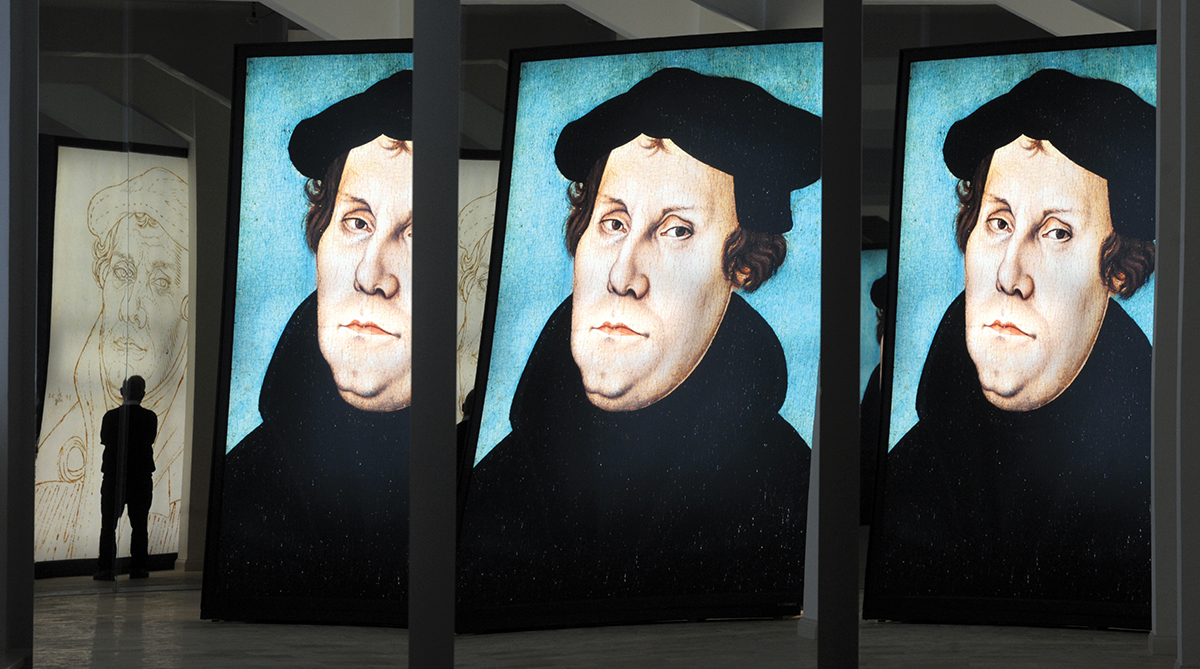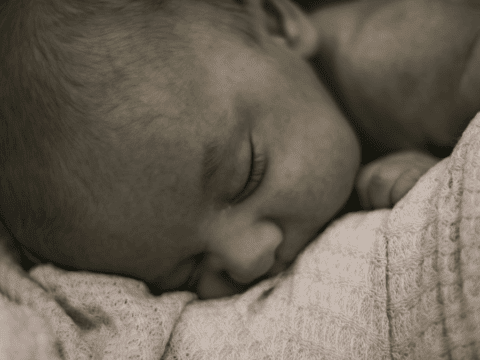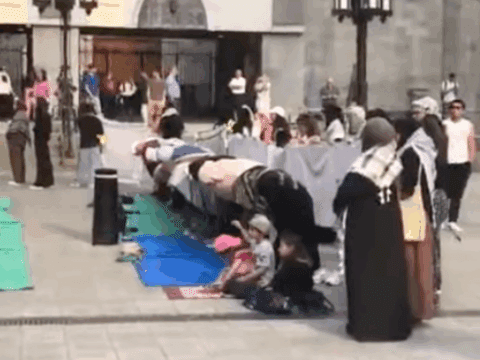It wasn’t a pilgrimage. It was more of a quest. I was searching for Martin Luther, visiting many of the towns in east-central Germany where he grew up, studied and ultimately inspired the Reformation, 500 years ago.
And I found him. Or, more accurately, I uncovered multiple Martin Luthers — Luther the monk, Luther the musician, Luther the married man, Luther the marketing device, Luther the anti-Semite and still more.
You may unsubscribe from any of our newsletters at any time.
As Germany — and most of the world where the Christian church has a presence — celebrates the 500th anniversary of the Wittenberg door incident, Martin Luther is everywhere. There are Luther exhibits and Luther tours, Luther cake mixes, Luther coffee and Luther beer. There’s even a popular Luther Playmobil figure, bearing a quill pen and a tiny copy of his translation of the New Testament.
And it seems the Christian church, right across its full spectrum, is on board. People of all denominations are making pilgrimages to Luther sites; even the Vatican supported naming a public square in Rome after Martin Luther.
Luther has long had broad appeal, and not always for the best reasons. Of course, he has been a hero to most Protestants for five centuries, but he was also honoured as a revolutionary by the Communist rulers of East Germany (Luther lived his life in towns and cities that were later part of the German Democratic Republic). And he was widely quoted by the Nazis, who cited his published harangues against Jews in defence of their extermination campaign.
So the quest for Martin Luther is complex indeed.
Not surprisingly, a number of Germany’s larger cities are offering significant Luther exhibitions or events. However, visitors wishing to connect with Martin Luther at a more visceral level should consider visiting the smaller communities associated with the man: places like Eisleben, where he was born and where he died; Erfurt, where he served as a monk; Eisenach, and the nearby Wartburg Castle, where he produced his game-changing translation of the New Testament; and Wittenberg, where he taught, preached and shook the world by nailing the 95 Theses to a church door.
Luther changed the face of his country and of the known world.
Where to start? Martin Luther (1483-1546) was both a man of his time and a man very much ahead of his time. He led the Protestant church into a new era, is credited with creating a common German language and introduced an entirely new role for music in the church. He changed the face of his country and of the known world.
But he was also a man of the early 16th century. He and his wife survived an outbreak of the bubonic plague in 1527. He lived in an era that saw witch burnings — and he did not protest. Government was alternately in the hands of monarchs, oligarchs or leaders of the Roman Catholic Church; democracy was utterly unknown. When rebellion against autocracy arose, Luther opposed the rebels.
All of this suggests that people trying to find Luther might do well to start by learning about his times. I was travelling with my wife, Rev. Nancy Knowles, and we found an effective if unusual way to get in touch with Luther’s era was to visit two panoramas: one in Wittenberg, created by photographer and digital artist Yadegar Asisi, and the other in the town of Bad Frankenhausen, the work of artist Werner Tübke.
Panoramas are enormous 360-degree artistic creations more common in Europe than in North America. These two are utterly unlike in content, yet both tell us a great deal about life in Luther’s time, giving context to his actions and impact.
Asisi’s Luther 1517, which opened last year, captures life in 16th-century Wittenberg. As our gaze moved around the tableau, we gained a real appreciation for Luther’s world: the elector of Saxony is riding into town with his cortège; a priest sells indulgences; courtesans lure potential clients; and monks turn away from Luther as he lectures passersby. The church dominates the townscape, while in the distance, smoke rises from a fire in which witches are put to death.
At the Tübke panorama, we were instantly immersed in the complex iconography and symbolism of Luther’s time. Tübke, who died in 2004, created this work under contract to the Communist state. The original plan was to commemorate the Peasants’ War (1524-1525), sparked by the radical preacher Thomas Müntzer, a contemporary of Luther’s. But Tübke believed he should portray much more. He produced a work that captures the overall turmoil in Germany — and by extension, Europe — of that era. His art is rich with the iconography of allegory, which would have been understood by Luther’s contemporaries but was almost impossible for us to comprehend without a guidebook.
We left the two panoramas knowing much more about Luther’s time, and also sensing how difficult it is to think like people of the 16th century.
Checking into the Augustinian monastery in Erfurt, now a church-run hotel and conference centre, we settled into our simple accommodations: a room with two single beds, a desk and a tiny wooden cross mounted on the wall. Built in the 13th century, the monastery was home to Luther for six years starting in 1505. It ceased to be a monastery in the 16th century, thanks to the reforming zeal of its most famous alumnus.
We visited several parts of the monastery that were part of Luther’s life: the cloister, the student rooms, the monks’ sleeping room and cells. One cell is identified as Luther’s, but our guide admitted that this is an educated guess based on a note by Luther about the view from his cell.
We felt our closest connection to Luther when we attended a service in the monastery’s chapel. Services are typically conducted in German, but on this occasion, worship was conducted in German, French and a bit of English to accommodate the visitors’ mother tongues. We were lost during the German, but when we heard phrases in French (which we both understand) or in English, it was like shutters being thrown back from a window. I realized, suddenly, how churchgoers must have felt when Luther’s reforms led to the mass being said in their own language rather than in Latin, and when accurate translations of the Bible were available in everyday German. It must have been life changing for them.
Luther’s own life changed profoundly when he went public with his radical ideas. At Wittenberg’s Castle Church, where he posted his 95 Theses, a timeline sketches a tumultuous biography. The first 34 years or so are less conflicted, although Luther’s decision to become a monk, triggered by a nearby lightning strike, upset his father, who wanted him to become a lawyer.
He became a monk anyway, then a priest and lecturer at Wittenberg University. By 1515, he had become a provincial vicar of the Augustinian order — a successful career path for a member of the clergy in his era.
But Luther was confounded by what he perceived as contradictions, both within his own belief system and in the activities of the entire Roman Catholic Church. As we walked the streets of Wittenberg, our guide, Sven Kröber, highlighted some of Luther’s struggles.
Luther was obsessed with his own sin, and despite lengthy and frequent acts of confession and penance, was unable to find peace. Kröber quoted Luther’s testimony that he was seated on a toilet “close to my study in the south tower” when he read John 3:16 and became convinced that the key to salvation is God’s grace alone; it is not earned by the works of human beings. Kröber pointed to the south tower of the former Wittenberg monastery and laughed: “God often uses the lowest places.”
According to church historians, Luther’s revelation about grace opened the way for him to challenge almost every practice of the Roman Catholic Church. He decided that people should be able to hear the word of God for themselves, so mass came to be offered in the language of the people. His newfound assurance about grace led him to elevate the proclamation of the Gospel — preaching — over the liturgy of the eucharist. This also led to the literal elevation of the pulpit.
Luther believed that people should have every opportunity to understand the message of the Gospel — including through music. An accomplished musician, he played the lute and wrote dozens of hymns (A Mighty Fortress is his masterpiece). He promoted hymn-singing in the church by making use of the relatively new printing press (invented around 1440) to get the word out, literally — dozens of his hymns were published, and his defence of a new approach to music in the church was also printed.
The printing press was a favourite medium for Luther and his supporters. His most famous document, the 95 Theses, was a handwritten missive, but it made it into print, with published editions spread right across Germany within a few weeks of being posted on Oct. 31, 1517.
The flashpoint of Luther’s argument with the Roman Catholic Church involved the practice of indulgences. The premise was that saints must have accumulated more virtue than they personally needed, so the church was now the repository of those virtues and could dispense them to believers, often for a price. Such doctrine flew in the face of Luther’s new conviction that salvation was an act of grace, and he began to preach against what had become a major source of income for Rome.
This issue was at the heart of Luther’s 95 Theses. The popular story is that he nailed his list of 95 disputes with Catholicism to the door of the Castle Church in Wittenberg. While the actual door-nailing is challenged by some scholars and defended by others, Luther certainly hammered incessantly at the foundations of the church of his day. As his revolution escalated, he was charged with heresy and excommunicated from the Roman Catholic Church. At the Diet of Worms (“diet” meaning an imperial assembly; Worms being a city in Germany) in 1521, he made his immortal declaration: “Here I stand. I can do no other.” Today, at many of the Luther exhibits, you can buy socks bearing that motto, in German or in English.
The elector of Saxony, Frederick the Wise, spent much time and effort trying to support the reformers while placating his Roman Catholic overlords. With Luther’s life in peril, Frederick arranged for him to be kidnapped — most probably with Luther’s knowledge, but unknown to Luther’s friends and allies.
He was “imprisoned” at Wartburg Castle, near Eisenach (now a UNESCO World Heritage Site). There are myriad stories of the year Luther spent at Wartburg disguised as a knight named Junker Jörg, but his world-changing accomplishment during his time there was the creation of a German translation of the New Testament.
While not the first German rendering of the New Testament, this work — which Luther managed in only 11 weeks, while his complete Bible took 12 more years — was unique both because he used Greek sources (ensuring better accuracy in the translation than using the more common Latin Vulgate) and because he developed a common German language, incorporating contemporary German words and phrases, and inventing others. German poet Heinrich Heine said, “Luther created the German language, and he did it by translating the Bible.”
At Wartburg, visitors can spend time in the small room that served as Luther’s study. Here, he translated the New Testament and fought the devil — to Luther, a very real being and a constant tormenter. In a bit of clever whimsy, today there is a small figure of a devil suspended near the desk in Luther’s room.
Martin Luther left an incredible legacy when he died in Eisleben on Feb.18, 1546. He brought about irrevocable change in the church — the one institution that was a common presence in the medieval European world. Every branch of the church was changed, from that day to this.
He translated the Bible into the vernacular; he wrote thousands of words that were printed and disseminated throughout the land; he wrote music and introduced congregational hymn-singing; and he eschewed vows of celibacy, encouraging priests, monks and nuns to marry — and did so himself. His marriage to former nun Katharina von Bora, well illustrated at the Lutherhaus in Wittenberg, was apparently a happy and surprisingly equal partnership for the times.
He also unwittingly inspired some of the great evils of the modern world. The Communist leaders of East Germany used his image as a hero of revolutionary thinking. More appallingly, the Nazis quoted Luther’s odious, late-in-life treatise On the Jews and Their Lies to support their genocide.
Our Wittenberg guide, Sven Kröber, led us to the side of the Stadtkirche (or City Church). High on the building’s exterior south wall is a blatantly anti-Semitic sculpture created 700 years ago — and therefore in situ when Luther preached there. Kröber told us that Nazi soldiers would be brought to stand where we stood; they would learn that their views were supported by the writings of Martin Luther.
Kröber summed up his take on the contradictions. “Luther was a very important man,” he said, “but Luther was no hero.” On the other hand, our Wartburg guide, Henny Dobert, told us, “Luther gave millions of people hope. That, you can never forget.”
Was Luther a hero? Perhaps not. Was he courageous? Yes. Visionary? Certainly. A man who revolutionized the world in his day, and for at least 500 years to come? Without a doubt.
And after driving 1,300 kilometres and walking many more on cobbled streets, castle staircases and church tiles, do we know Luther? Well, we caught glimpses of him everywhere we went. And those glimpses of a complicated human being who changed our world were reward enough for our efforts.
Paul Knowles is a writer in New Hamburg, Ont. The German Tourism Board sponsored his trip to Germany, but did not review or approve this story.
This story first appeared in The United Church Observer’s October 2017 issue with the title “A complicated icon.














